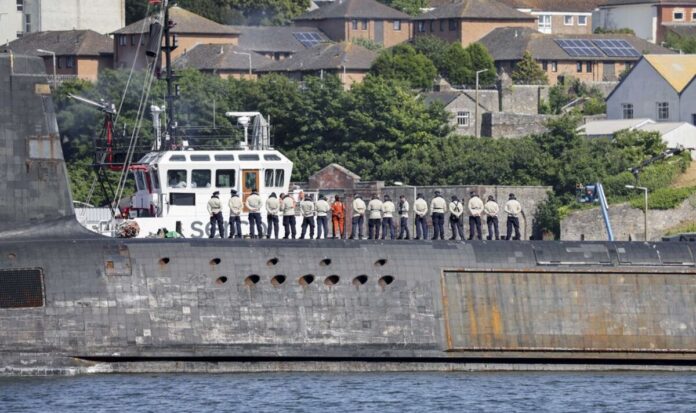HMS Victorious arrives at HMNB Devonport (Image: LPhot Barry Swainsbury) A serious drop in recruitment at the Royal Navy could spell disaster for Britain’s nuclear deterrant, it has been claimed. Defence sources say a drop in new staff could leave the navy struggling to fight at sea. One even described the current situation as a “general collapse” in new recruits. The navy however rejected this claim but did admit there had been issues trying to recruit new people into the service. According to Sky News, an emergency navy board was held last month to discuss the problem. Looking into ways to combat the decline, navy chiefs are considering options to accelerate recruits into training. These include potentially inviting some forward on to initial courses before they have passed all their security checks, one source said. The navy has the smallest workforce (Image: Getty) The source said: “Previously, the navy has used this for one or two [recruits] – not the hundreds they need now. It’s risky.” In the past, such a move was only done for a limit period and in exceptional circumstances before security checks could be finalised. However a “perfect storm” of negative factors have hampered recruitment. This includes a 35% shortage of recruitment staff in some areas of the UK. This comes as navy reservists who fill the role have quit “in droves” because of concerns about job security, Sky reports. There have also been alleged issues with internal efforts to use data analytics to help with recruitment after a contract expired with a private company. The system was said to have worked well. There has also been a “wider failure” by the government to keep pay inline with inflation. With this, a number of sailors are said to be leaving, meaning “outflow” is ahead of “inflow”. The source told Sky submarine staff could be hit hardest as the smallest workforce with some unique roles. These gaps, they claim, are particularly prevelant in London as well as Scotland, with north of the border being a hotspot for submariners. Official Ministry of Defence data, which was released last month, showed all three services are struggling with recruitment. Although the navy, with just over 29,000 full-time workers, performed worst. Intake in the 12 months leading to March 2023 dropped to 22.1% for the Royal Navy and the Royal Marines compared to the year before. The army meanwhile was down 14.6% year-on-year with the RAF down 16.6%. Sky claims unofficial figures for the navy appear to paint an even bleaker picture. In May, Raleigh saw 109 recruits out of a capacity of 375, with only 10 recruits turning up one week, from a maximum weekly capacity of 75, the broadcaster claimed. Responding to the allegations about recruitment, a Royal Navy spokesperson said: “The Royal Navy has enough trained personnel to meet all of its operational commitments, and it is untrue to say there is a collapse in recruitment. “We are experiencing the same challenges as every employer in the UK and are competing for people against a national shortage. Recruitment is one of our top priorities, and we are working across the navy to continue to deliver success: including the recent launch of our new Royal Marines recruitment campaign.”
Royal Navy recruitment drive failure could spell disaster for nuclear deterrent
Sourceexpress.co.uk
RELATED ARTICLES


